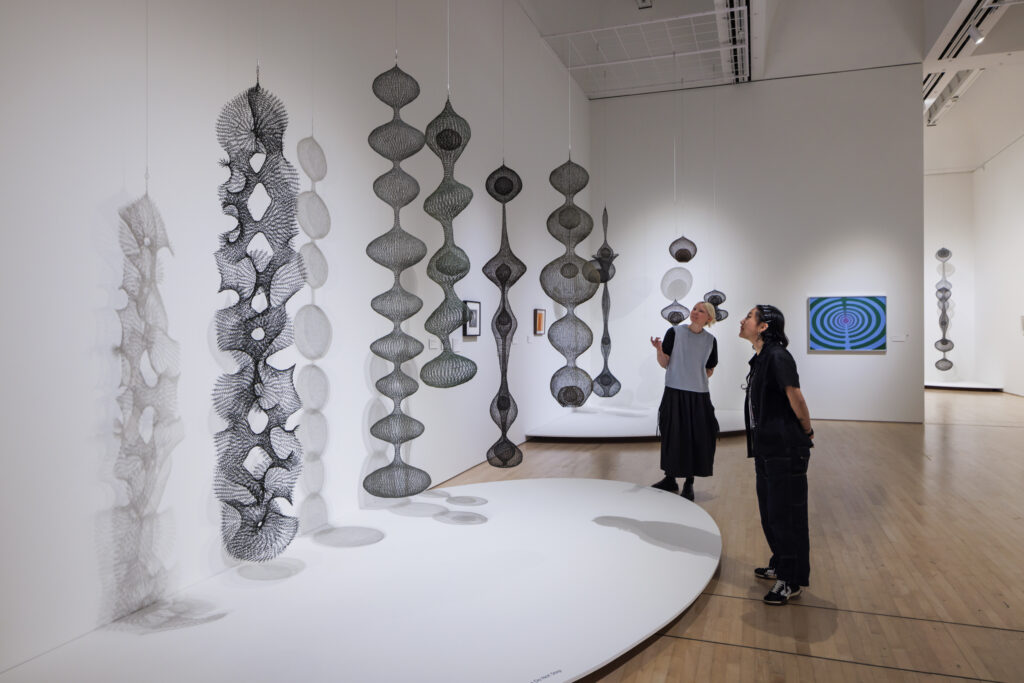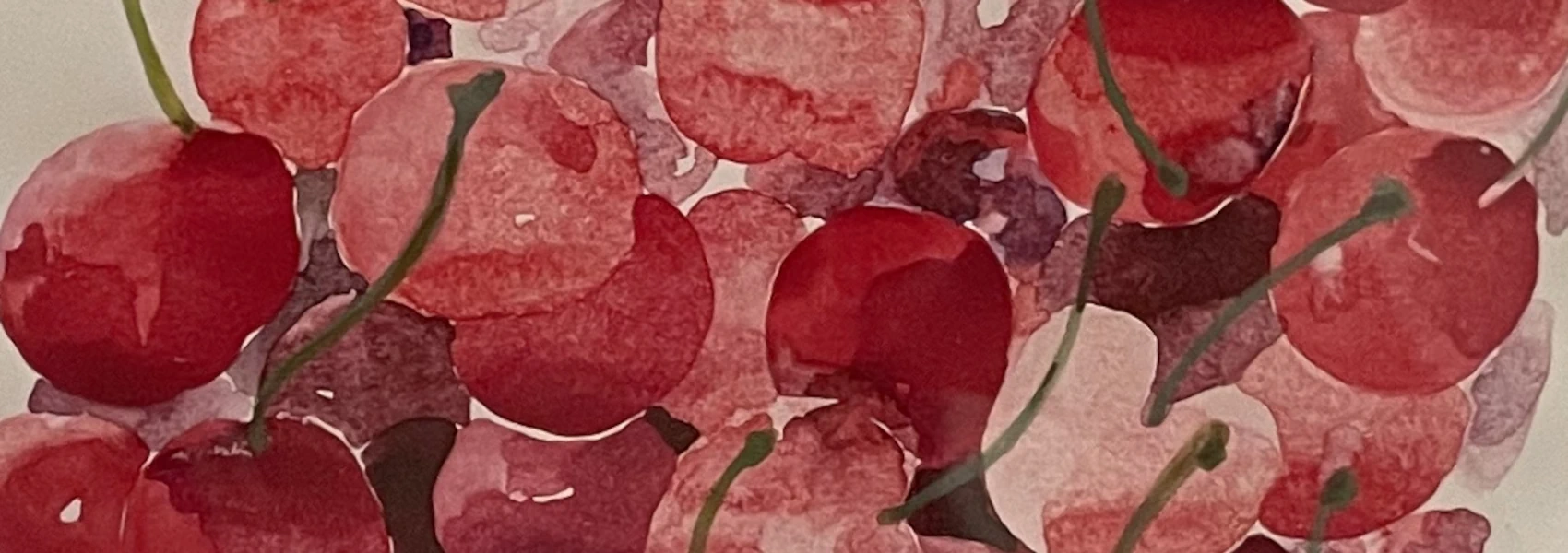Ruth Asawa Retrospective at SFMOMA
by
The Ruth Asawa Retrospective is on view at the San Francisco Museum of Modern Art from April 5–September 2, 2025. Learn more at the SFMOMA website.
If you live in San Francisco, you've probably seen Ruth Asawa's artwork. She's best known for her woven wire forms, most often loopy enclosed spheroids, organic forms hung from above that evoke fruit or insect or bird nests. She lived most of her life in San Francisco and she was also commissioned to make many public artworks in San Francisco and the Bay Area. You can come to take her for granted.

Ruth Asawa Retrospective (installation view, San Francisco Museum of Modern Art, April 5–September 2, 2025); artwork: © 2025 Ruth Asawa Lanier, Inc., courtesy David Zwirner; photo: Henrik Kam via SFMOMA
When you think of Ruth Asawa, you probably think of something like this photo from the SFMOMA retrospective. And there's a good reason Asawa is know for these looped wire forms. They're amazing. They're unique. She developed a whole expressive vocabulary with them.
That's what drew me to go to the Ruth Asawa Retrospective at SFMOMA. I really wanted to know more about how she made them. They look kind of like knitted or crochet fabric, except they're wire and huge. I mean, they're often bigger than a person.
While the retrospective had a little bit of information about how Asawa developed the technique, it focused more on how she developed the idea for the shapes. Her early works in two dimensional media repeated similar loopy, lobed, organic forms. You could see how the recurring fascination with a particular kind of form developed into a distinct artistic language.
One very interesting thing about Asawas was how she kept on making things. She didn't just evolve her woven wire baskets and work through those, though she certainly produced a huge body of those sculptures. She also painted in acrylic and watercolor, sketched, worked with markers, repurposed stamps, made ceramics, made jewelry, cast bronze, designed gardens, and worked with play dough! When she had health problems later in her life which limited what she could do, she took up more sketching and watercolor in place of weaving wire forms.
That would all be impressive enough, but she did it all while raising six children. Six! Can you imagine? I find it difficult to imagine being so prolific and productive if she had no other work than making the art. At the same time, I notice that often when I've seen plaques on Asawa's art, she's been described as a housewife, in a way that made it sound like she was only an eccentric lady who did art as a little side hobby between her housework, nearly an outsider artist. The exhibition definitely dispels that impression. She went to art school and studied formally, was dedicated to her art and worked on it through her whole life, and maintained a strong connection to the artistic community she entered while at art school throughout her life.
I was most surprised, and inspired, by Asawa's watercolors. The description of a watercolor painting of eggplants quotes one of her grandchildren:
"She always had an idea," remembers Asawa's granddaughter Lilli Lanier, who grew up nearby. "Come over tomorrow. We're going to draw eggplants. And then we're going to eat them. We'd draw food…. and then [it would turn] into a cooking lesson-how you make Japanese noodles with cilantro and the eggplants you've just drawn."
The exhibition also featured a watercolor painting of a bowl of cherries from a private collection, two watermelons, and tons of hydrangeas. The Asawa house was in Noe Valley, probably walking distance from where I live now, and I can imagine her painting some of the same things I look at and want to paint myself. Seeing her paintings of everyday fruits and vegetables made me want to try painting them too. Having gone to see the exhibition, I feel a strong connection to Asawa as my neighbor, if across time. I only moved to Noe Valley after she had already died.
Seeing the exhibition inspired me to try painting fruits and vegetables. I got home, I sketched some cherries, and when I went grocery shopping, I deliberately chose some interesting tomatoes so I could paint them as well as eat them. Since Ruth Asawa was so dedicated to arts education and involving other people in art, I'd like to think she would be happy to know that a neighbor across time has been inspired by her to make art of the objects found at hand.
